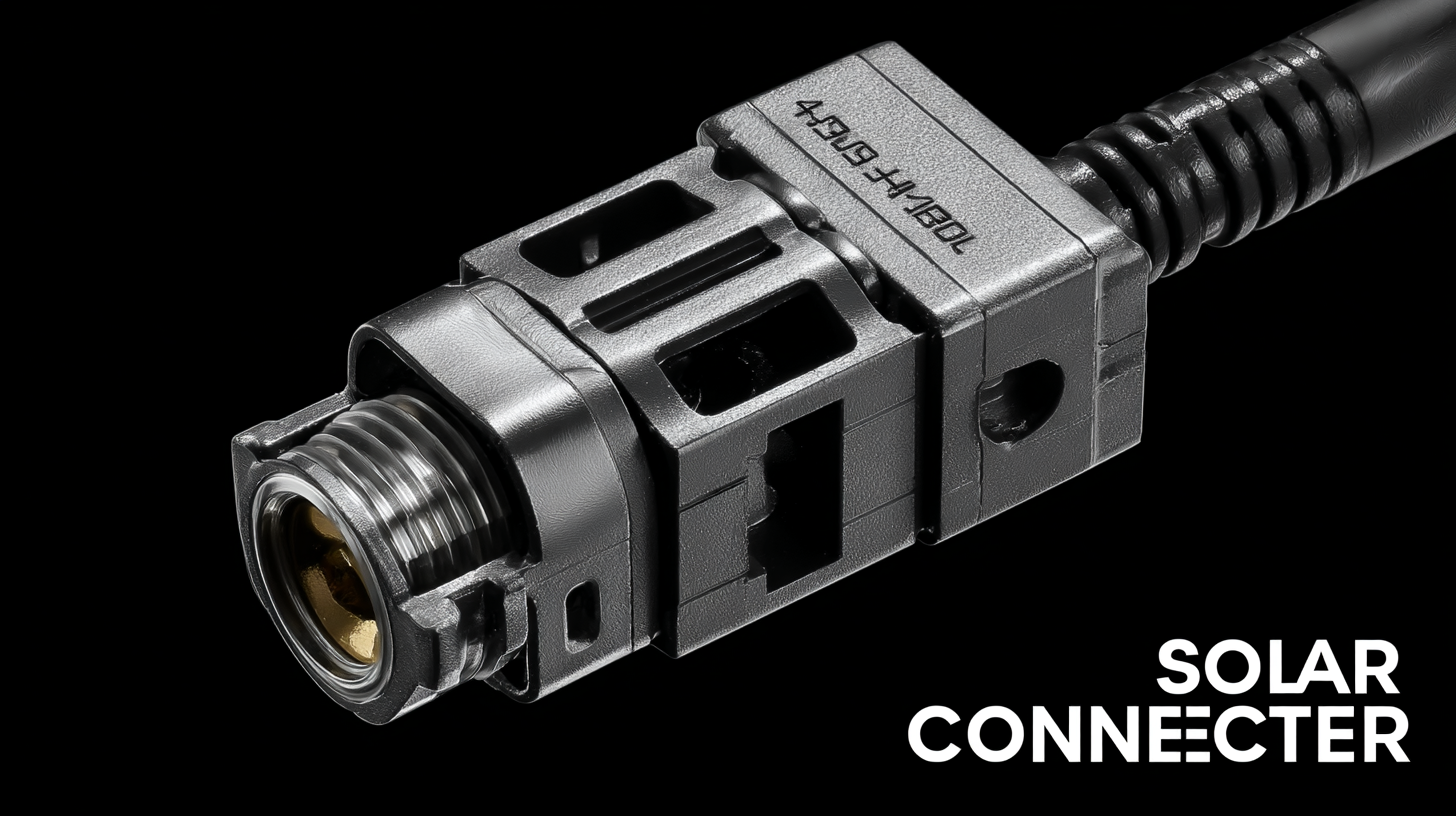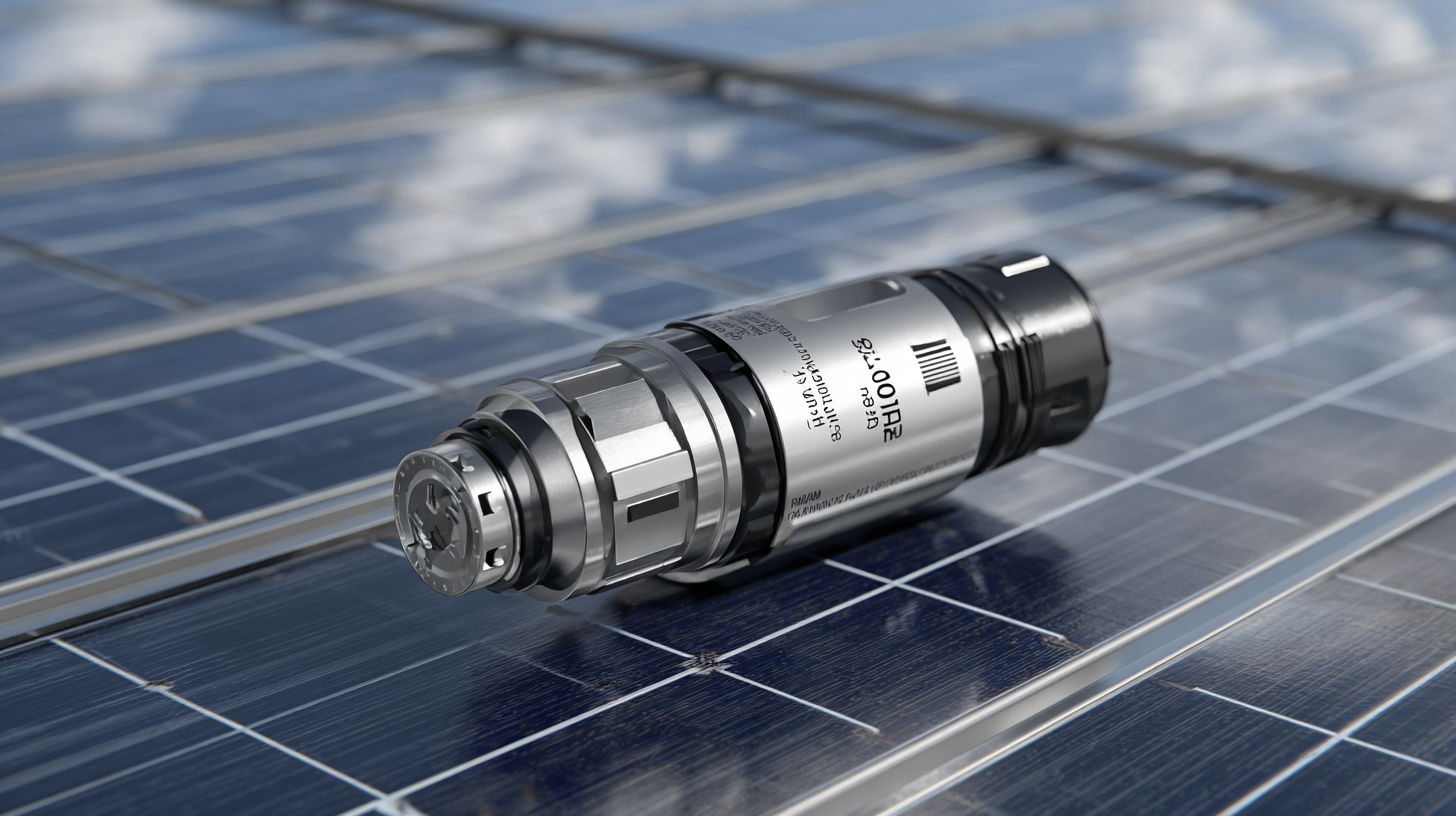
5 Industry Applications for the Best Solar Connector: 7 Reasons Why They Boost Efficiency and Durability
As the global energy landscape shifts towards sustainable solutions, the importance of effective energy transmission is more critical than ever. One pivotal component in this transition is the solar connector, which plays a vital role in enhancing the efficiency and durability of solar energy systems. According to a report by the International Renewable Energy Agency (IRENA), the global solar power capacity is projected to reach 4,500 GW by 2030, necessitating high-quality components that can withstand harsh environmental conditions. Furthermore, a study from the National Renewable Energy Laboratory highlights that using advanced solar connectors can improve system reliability by up to 30%.

In this blog, we will explore five key industry applications for the best solar connectors and discuss seven key reasons why these components are essential for boosting overall performance in solar energy systems.
The Role of Solar Connectors in Maximizing Renewable Energy Output
In the rapidly evolving renewable energy sector, solar connectors play a pivotal role in maximizing energy output. According to a report by the National Renewable Energy Laboratory (NREL), improper or low-quality connectors can lead to efficiency losses of up to 20%. This is primarily due to voltage drops and increased resistance, which ultimately hinder the performance of solar panel systems. The best solar connectors enhance the overall durability and reliability of solar installations, ensuring that energy harvested is maximized.
Tip: When selecting solar connectors, opt for those certified by relevant standards such as UL 6703 or IEC 62852. These certifications guarantee that the connectors have been rigorously tested for performance and safety, crucial factors in maintaining long-term energy efficiency.
Additionally, high-quality connectors contribute to reduced maintenance costs. A study from EnergySage found that well-manufactured solar connectors require less frequent inspections and replacements, thus decreasing operational downtime. This efficiency in performance not only extends the lifespan of solar systems but also improves the return on investment for solar energy projects.
Tip: Always consider the environmental rating of your solar connectors. Selecting connectors resistant to UV radiation and extreme temperatures can further enhance the durability of your solar installations, ensuring they withstand varying weather conditions and continue to operate at optimum efficiency.
Efficiency and Durability of Solar Connectors in Various Industries
Key Advantages of High-Quality Solar Connectors in Green Technology Applications
In the evolving landscape of green technology, high-quality solar connectors stand out for their critical role in boosting efficiency and durability across various applications. With the ramp-up of green initiatives worldwide, including advancements in hydrogen energy and photocatalytic technology, the demand for reliable solar connectors has never been greater. These components not only facilitate efficient energy transfer but also ensure system integrity in challenging conditions.
Tips: When selecting solar connectors, look for those that meet stringent industry standards, ensuring they can withstand extreme weather conditions and potential corrosion. Moreover, consider connectors that offer easy installation features to minimize downtime during setup.

The integration of robust solar connectors is vital for optimizing energy systems, especially in sectors like renewable energy storage and eco-friendly construction. As cities move towards sustainable infrastructures, harnessing the power of solar energy through quality connectors will be indispensable in the quest for a greener future.
Tips: Regular maintenance and inspection of solar connectors can significantly extend their lifespan and performance. Always keep an eye on connections for signs of wear or degradation, which can impact system efficiency.
Durability Factors: How Solar Connectors Enhance System Longevity in Harsh Environments
When it comes to solar energy systems, the durability of components is vital for ensuring long-term performance, especially in harsh environments. Solar connectors, often overlooked, play a significant role in enhancing the overall longevity of photovoltaic systems. With the capacity to withstand extreme temperatures, moisture, and UV radiation, high-quality connectors are essential for maintaining system integrity over time.
One of the key factors contributing to the durability of solar connectors is their robust materials and design. Many top-tier connectors utilize advanced engineering plastics and corrosion-resistant metals, which are crucial for preventing degradation and failure. This resilience not only protects the electrical connections from environmental stressors but also minimizes maintenance and replacement costs. Furthermore, connectors designed specifically for solar applications are often tested rigorously to meet industry standards, ensuring that they perform reliably even under the most challenging conditions.
In addition, effective sealing mechanisms within these connectors help prevent water and dust ingress, further extending the life of the solar system. By ensuring that each connection remains secure and protected from the elements, solar connectors contribute significantly to the overall efficiency of solar installations. This results in a reliable energy source that can withstand the test of time, allowing businesses and homeowners to harness solar energy with confidence.
5 Industry Applications for the Best Solar Connector: 7 Reasons Why They Boost Efficiency and Durability
| Industry Application | Efficiency Improvement (%) | Durability (Years) | Temperature Tolerance (°C) | Environmental Resistance |
|---|---|---|---|---|
| Residential Solar Systems | 15 | 25 | -40 to 85 | UV, Water |
| Commercial Solar Farms | 20 | 30 | -30 to 90 | Dust, Moisture |
| Utility-Scale Solar Projects | 25 | 35 | -40 to 90 | Salt, Chemical |
| Off-Grid Solar Systems | 18 | 20 | -40 to 85 | UV, Dust |
| Remote Electrification Projects | 22 | 25 | -30 to 80 | Water, Heat |
Data-Driven Insights on Efficiency Gains from Advanced Solar Connector Designs
The integration of advanced solar connectors has become a pivotal facet in enhancing the efficiency of photovoltaic systems. Recent data-driven insights reveal that modern connector designs can improve energy yield by up to 10%, significantly optimizing overall performance. This efficiency gain is particularly crucial as the renewable energy sector witnesses an accelerated demand, driven by a global push for sustainable solutions. In 2025, it's projected that renewable energy sources will account for over 50% of the energy mix, underscoring the urgent need for innovations like high-efficiency connectors that can support this growth.
Moreover, the application of artificial intelligence in energy transition processes complements these advancements. By optimizing photovoltaic arrays, organizations can maximize energy output while minimizing losses. Such smart deployments showcase how the coupling of emerging technologies not only boosts the durability of solar connectors but also aligns with broader sustainability goals in a rapidly evolving market. As industries pivot towards greener practices, leveraging data to refine these technologies stands as a testament to their indispensable role in the transition to a circular economy.
Industry Case Studies: Successful Implementations of Effective Solar Connector Solutions
In recent years, the solar industry has witnessed remarkable advancements in connector solutions that enhance both efficiency and durability across various applications. A notable case study is the deployment of high-performance solar connectors in large-scale photovoltaic installations, which resulted in up to a 20% reduction in energy loss due to improved conduction and weather resistance, as reported by the International Renewable Energy Agency (IRENA). These connectors are designed to withstand extreme environments, ensuring longevity and consistent energy output.
Another compelling example is in residential solar markets, where innovative connector designs reduce installation time by as much as 30%, according to the Solar Energy Industries Association (SEIA). This has not only streamlined processes for installers but also significantly minimized labor costs, making solar technology more accessible to homeowners.
Tip: When selecting solar connectors, consider products that offer UV stability and enhanced corrosion resistance, as these factors greatly influence the overall system performance and lifespan.
Tip: Regular maintenance checks on solar connectors can prevent potential performance issues. Ensure your connectors are free from dirt and debris, and test their integrity every few months to maximize efficiency.

